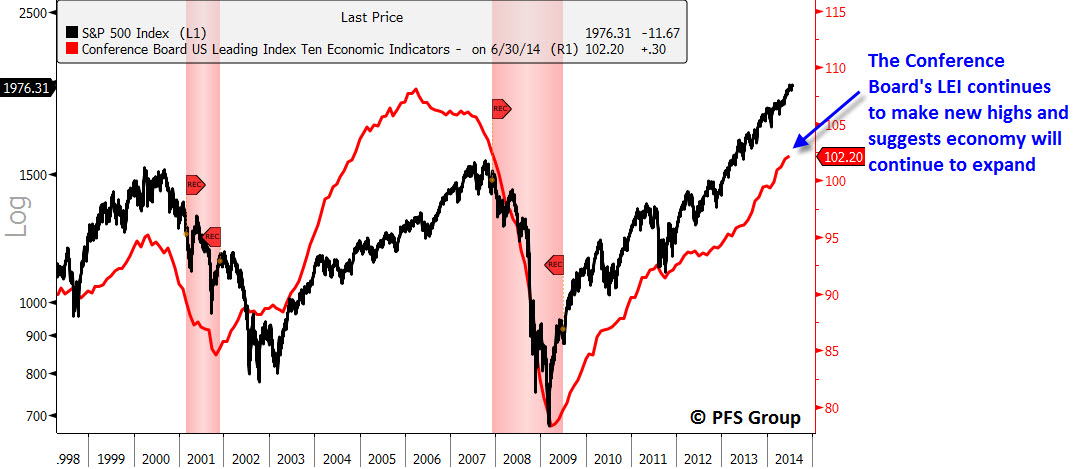How many times has this person or that person tried to time the top, call for a crash, or pronounce each dip as the beginning of a new bear market? Sure, the market is getting more and more expensive, debt levels are still high around the globe, and Drudge Report assures us daily that the world is going to hell in a handbasket, but does this signal the end is near for stocks and the economy?
Here are four “big picture” charts or indicators to help determine whether the markets and economy are topping out and ready to roll over. Although certain events can always take the markets by surprise and lead to a correction, in general, most major turning points and trend changes between bull and bear markets are associated with a meaningful and prolonged decline in economic activity, a heightened level of financial stress, and a rapid decline in corporate profits.
Right now, as the charts clearly show, we see none of these things currently taking place.
Economic Data
The Conference Board’s Leading Economic Index (in red, S&P 500 in black), which we’ve shown numerous times before, measures a wide range of economic data across the U.S. and shows whether the economy is expanding, flat, or in decline. Right now it shows the major trend for the economy is still upwards. Until this and other LEIs begin to weaken and reverse trend, the overall economic backdrop is favorable for market conditions.
Probability of a Recession
Corroborating the message from the Conference Board is our own Recession Model, which shows the current probability of a U.S. recession at only 3% (Note: this model is optimized to spike once certain threshold levels are met to help delineate between a minor economic slowdown and the beginning of recession).
Financial Stress
The TED spread is a well-known way to measure the level of stress within the financial system and, as you can see, highly correlates with major tops in the market as pressures begin to arise within the economy and wider financial system. Current levels of financial stress are quite low and not showing the signs we’d expect to see near a top in the market.
Corporate Profit Margins
The stock of a company rises and falls each quarter based on their earnings. The stock market is, of course, a market of stocks and so what happens when the majority of companies report better earnings? The stock market rises. However, as Investopedia says, “the earnings of a company often doesn’t tell the entire story.” For that, you have to look at profit margins, which take into account costs as well.
Here we provide a chart of the collective profit margins of S&P 500 companies. As you can see, profit margins peak along with the stock market and often signal the beginning of a bear market, something which hasn’t happened yet.
Summary
When we look at the direction of U.S. economic data, the probability of a recession, levels of financial stress, and corporate profit margins the message is clear: we are not yet seeing any of the tell-tale signs associated with a major peak or beginning of a bear market in U.S. stocks.










